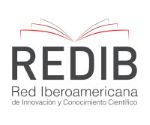Predicción de clientes potenciales utilizando K vecino más cercano en el área de negocios de la Cooperativa Riobamba
DOI:
https://doi.org/10.47187/perspectivas.4.1.150Palabras clave:
Clientes Potenciales, Créditos, KDD, K-NN, Minería de DatosResumen
K vecino más cercano (KNN) es uno de los algoritmos que permite el diagnóstico en tiempo real y apoya la toma de decisiones. Para esta investigación, se consideró la base de datos del área de negocio de la Cooperativa de Ahorro y Crédito Riobamba Ltda., un banco de datos que almacena una gran cantidad de información de los clientes. Estos datos se utilizaron para seleccionar información relevante manteniendo y respetando la confidencialidad de los clientes. El objetivo principal del proyecto es predecir clientes potenciales aplicando el algoritmo KNN. Los resultados demuestran que el algoritmo KNN es adecuado para predecir clientes potenciales de acuerdo a sus antecedentes demográficos, económicos y factores internos de la Cooperativa Riobamba Ltda., Resultando esto, un recurso útil para la institución en la toma de decisiones sobre futuras ofertas de crédito. Se destaca la importancia de aprovechar la información que se maneja en cada institución y más si es dentro del sector financiero porque tanto los clientes como la institución se benefician. Lo primero porque tendrían más opciones de crédito y las instituciones financieras porque podrían incrementar su cartera de clientes y mejorar su servicio.
Métricas
Citas
Mauricio Miranda, and Jheser Guzmán. Análisis de la deserción de estudiantes universitarios usando técnicas de minería de datos. Formación universitaria, 10(3), p. 61-68, 2017.
Cesar Higinio Menacho Chiok. Predicción del rendimiento académico aplicando técnicas de minería de datos. Anales Científicos. Universidad Nacional Agraria La Molina, 78(1), p. 26–33, 2017.
Sergio Valero, Alejandro Salvador, and Marcela García. Minería de datos: predicción de la deserción escolar mediante el algoritmo de árboles de decisión y el algoritmo de los k vecinos más cercanos. Ene 779(73), p. 33, 2005.
Jahir Gutiérrez, and Bernardo Molina. Identificación de técnicas de minería de datos para apoyar la toma de decisiones en la solución de problemas empresariales. Revista Ontare 3(2):33-51, 2015.
José Molina, and Jesús García. Técnicas de Minería de Datos basadas en Aprendizaje Automático. Técnicas de Análisis de Datos, 96-266, 2008.
Zhenni Feng, and Yanmin Zhu. A survey on trajectory data mining: Techniques and applications. IEEE Access 4, 2056-2067, 2016.
Angelica Duca, Clara Bacciu, and Andrea Marchetti. A K-nearest neighbor classifier for ship route prediction. OCEANS 2017-Aberdeen. IEEE, p. 1-6, 2017.
Szilárd Vajda, and K. C. Santosh. A fast k-nearest neighbor classifier using unsupervised clustering. International conference on recent trends in image processing and pattern recognition. Springer, Singapore, p. 185-193, 2016.
María Moreno, and Vivian López. Uso de Técnicas No Supervisadas en la Construcción de Modelos de Clasificación de Ingeniería de Software. Departamento de Informática y Automática. Universidad de Salamanca, 2015.
Y. Belinchón. Minería de datos. Obtenido de. https://es. scribd. com/document/308398381/15mem-pdf, 2015.
María N. Moreno García, Luis A. Miguel Quintales, Francisco J. García Peñalvo, and M. José Polo Martín. Aplicación de Técnicas de Minería de Datos en la Construcción y Validación de Modelos Predictivos y Asociativos a Partir de Especificaciones de Requisitos De Software. ADIS, 2001.
S. R. Timarán-Pereira, I. Hernández-Arteaga, S. J. Caicedo-Zambrano, A. Hidalgo-Troya, and J. C. Alvarado-Pérez. El proceso de descubrimiento de conocimiento en bases de datos. En Descubrimiento de patrones de desempeño académico con árboles de decisión en las competencias genéricas de la formación profesional. Bogotá: Ediciones Universidad Cooperativa de Colombia, pp. 63-86, 2016.
Thomas Cover, and Peter Hart. Nearest neighbor pattern classification. IEEE transactions on information theory, 13(1), p. 21-27, 1967.
Veena Vijayan, and Aswathy Ravikumar. Study of data mining algorithms for prediction and diagnosis of diabetes mellitus. International journal of computer applications, 95(17), 2014.
Sadegh Bafandeh Imandoust, and Mohammad Bolandraftar. Application of k-nearest neighbor (knn) approach for predicting economic events: Theoretical background. International Journal of Engineering Research and Applications, 3(5), p. 605-610, 2013.
George Darren, and Paul Mallery. IBM SPSS statistics 26 step by step: A simple guide and reference. Routledge, 2019.
Jose Santamaría, and Javier Hernández. Microsoft SQL Server. SQL SER vs MY SQL, p. 1-6, 2016.
Markus Hofmann, and Ralf Klinkenberg. RapidMiner: Data mining use cases and business analytics applications. CRC Press, 2016.
Emeditor.com. EmurasoftEmEditor. [Online]. Available: https://www.emeditor.com/.
Ingrid Russell, and Zdravko Markov. An introduction to the Weka data mining system. Proceedings of the 2017 ACM SIGCSE Technical Symposium on Computer Science Education, 2017.
Descargas
Publicado
Cómo citar
Número
Sección
Licencia
Derechos de autor 2022 Miryan Estela Narváez, Raquel Johanna Moyano Ariasy Moyano Arias, Diego Bernardo Palacios Campana, Geovanny Augusto Izurieta Guamán

Esta obra está bajo una licencia internacional Creative Commons Atribución 4.0.
Derechos de Autor
Los autores de trabajos escritos retendrán sus derechos de autor sobre sus artículos publicados en la Revista Pespectivas. Estos derechos les permite sobre dichos trabajos: presentarlos en público, preparar trabajos derivados, reproducirlo físicamente a través de impresión y distribuirlo en sus redes sociales o de investigación. Estos derechos se mantendrán inalterables siempre y cuando los autores respecten la política de publicación y de acceso libre que maneja la Revista Perspectivas.
Derechos de Publicación
La Revista Perspectivas se reserva todos los derechos de primera publicación sobre cada uno de los artículos que los autores hayan enviado a su proceso de revisión y publicación. Esto implica que los autores solo podrán ejercer sus derechos de autor si, al momento de distribuir, compartir, presentar o usar el contenido total o parcial de sus artículos, indican adecuadamente la fuente y origen de dicha publicación.













